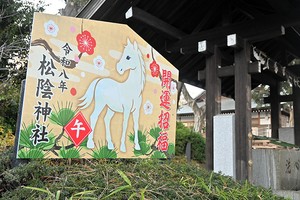By HIROBUMI OHINATA/ Staff Writer
December 4, 2024 at 15:13 JST
 Most of Japan's bluefin tuna supply is sourced from imports and farming, with only 20 percent caught by domestic fishermen in the Pacific and Atlantic oceans in 2022. (Asahi Shimbun file photo)
Most of Japan's bluefin tuna supply is sourced from imports and farming, with only 20 percent caught by domestic fishermen in the Pacific and Atlantic oceans in 2022. (Asahi Shimbun file photo)
Good news for fishermen and sushi lovers in Japan.
The Western and Central Pacific Fisheries Commission (WCPFC) has agreed to increase the catch quota by 1.5 times for bluefin tuna weighing 30 kilograms or more next year.
The agreement was reached at the commission’s conference held in Suva, Fiji, from Nov. 28 to Dec. 3. Members discussed managing bluefin numbers in the Pacific Ocean.
Starting in 2025, Japan’s current 5,614-ton limit will be raised to 8,421 tons. Japanese fishermen will also be permitted to catch more small tuna, with the limit going from 4,007 to 4,407 tons.
These decisions were based on the recovery of the Pacific Ocean’s tuna population. It will be the second increase by WCPFC. It previously bumped up the catch limit in 2022.
The expensive fish will likely cost slightly less in Japan.
If the actual amount of tuna caught matches the new quota, Japanese fishing vessels would see their largest hauls since 2011, when boats brought in 13,000 tons.
According to the Fisheries Agency, the domestic supply of bluefin tuna in 2022 was 62,000 tons. Of that total, 80 percent came from imports and fish farms.
The remaining supply was caught in the Pacific and Atlantic oceans.
Japan is expected to bolster its tuna imports as other countries have also expanded their catch limits, and to increase the amount of tuna farmed, taking advantage of the higher quota for small tuna.
Twenty-six countries and regions, including Japan, make up the WCPFC.
The global conference introduced catch quotas for each member in 2015 to prevent overfishing after bluefin tuna numbers in the Pacific Ocean plummeted from 156,000 tons in 1961 to 11,000 tons in 2010.
Population totals have gradually recovered, leading to the WCPFC’s initial choice to increase catch limits for large tuna by 15 percent in 2022.




















A peek through the music industry’s curtain at the producers who harnessed social media to help their idols go global.
A series based on diplomatic documents declassified by Japan’s Foreign Ministry
Here is a collection of first-hand accounts by “hibakusha” atomic bomb survivors.
Cooking experts, chefs and others involved in the field of food introduce their special recipes intertwined with their paths in life.
A series about Japanese-Americans and their memories of World War II